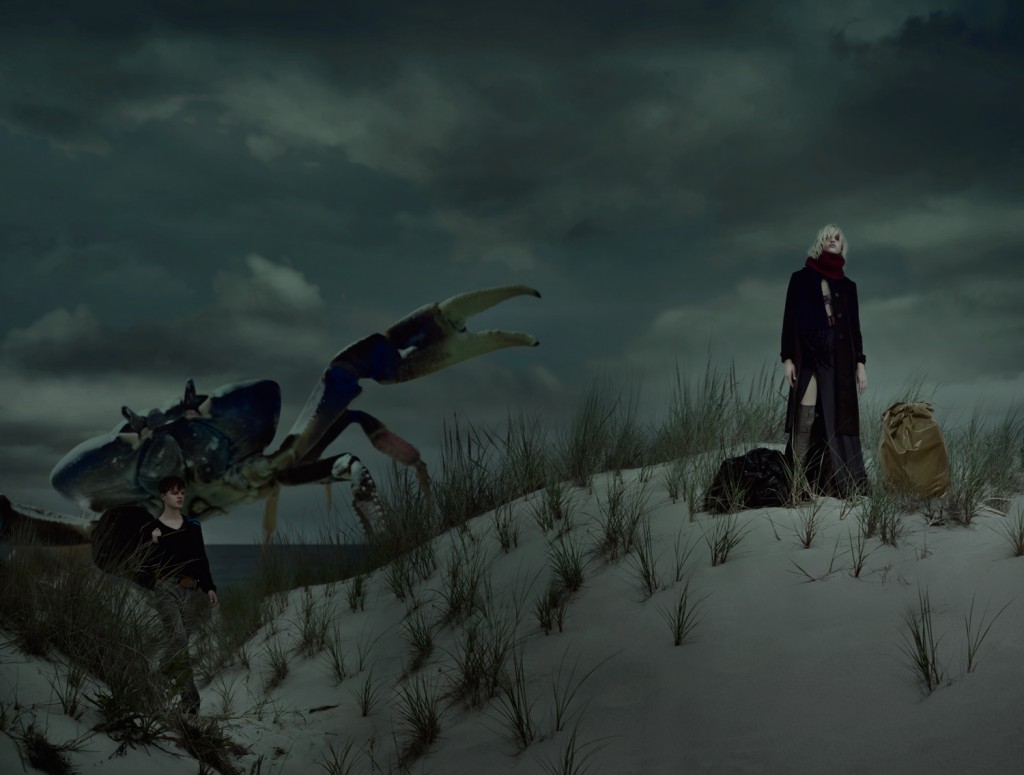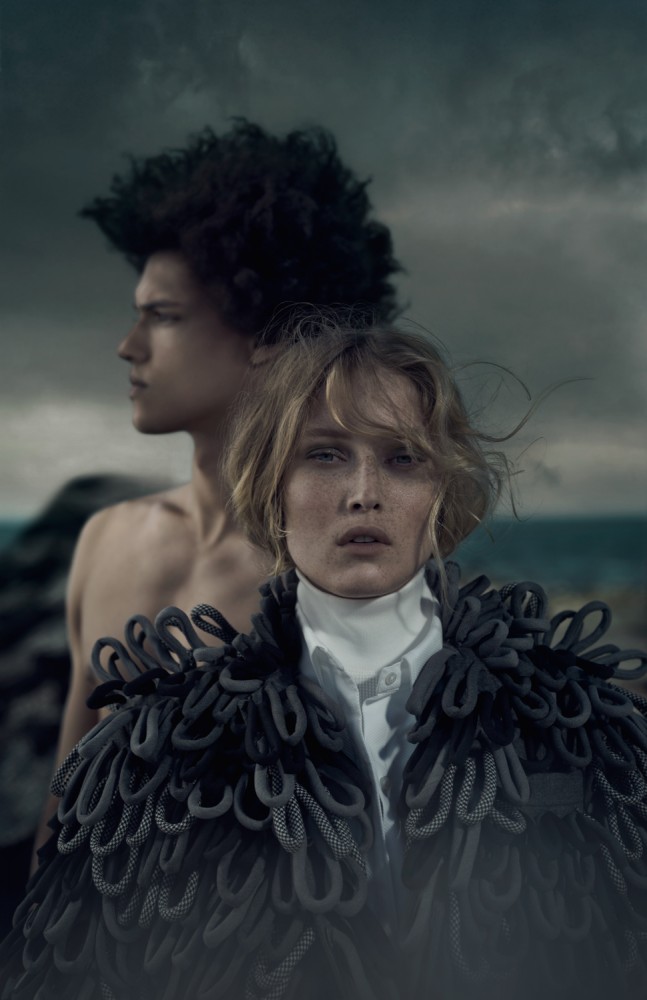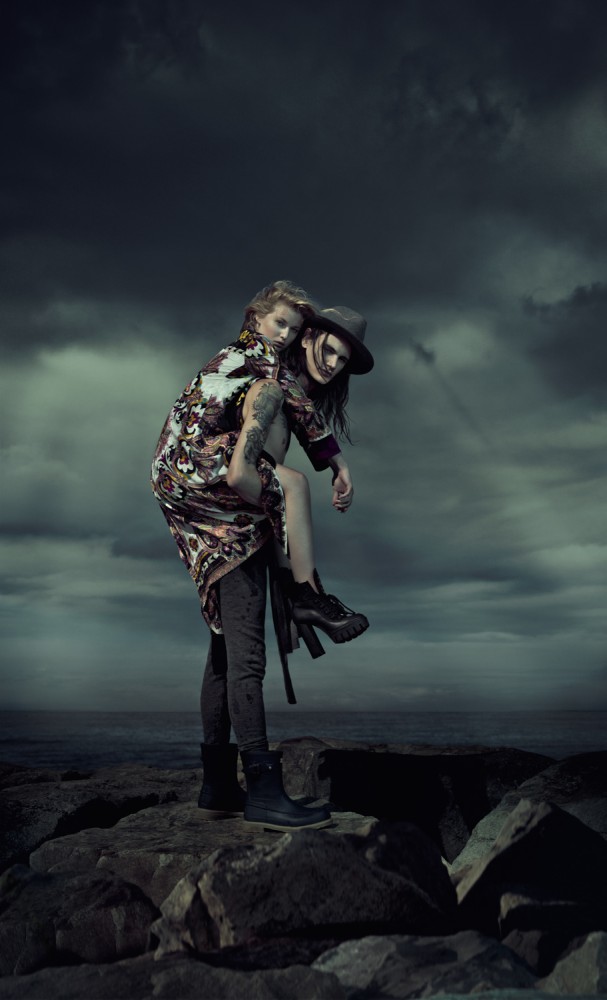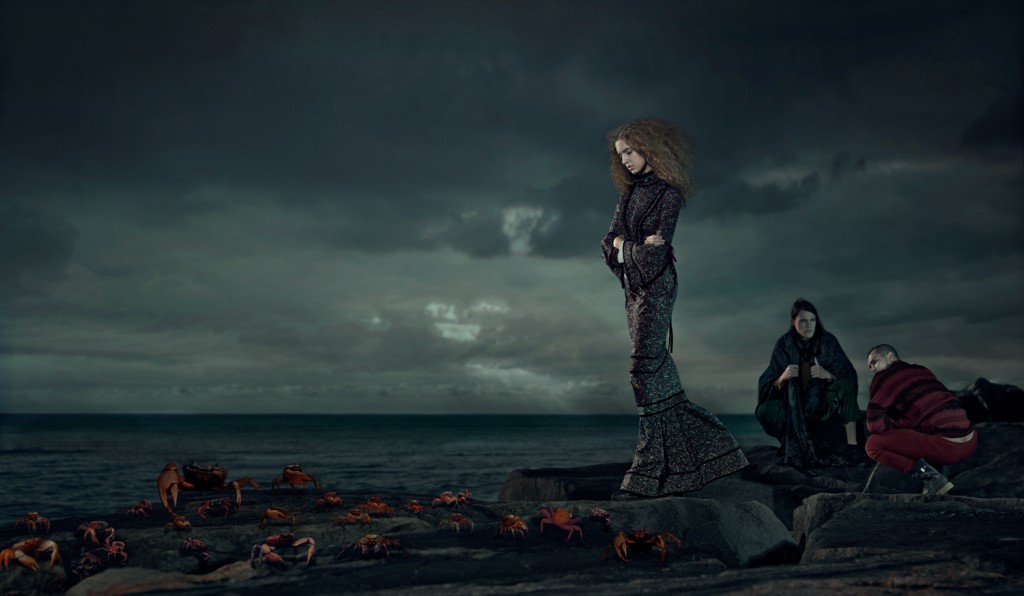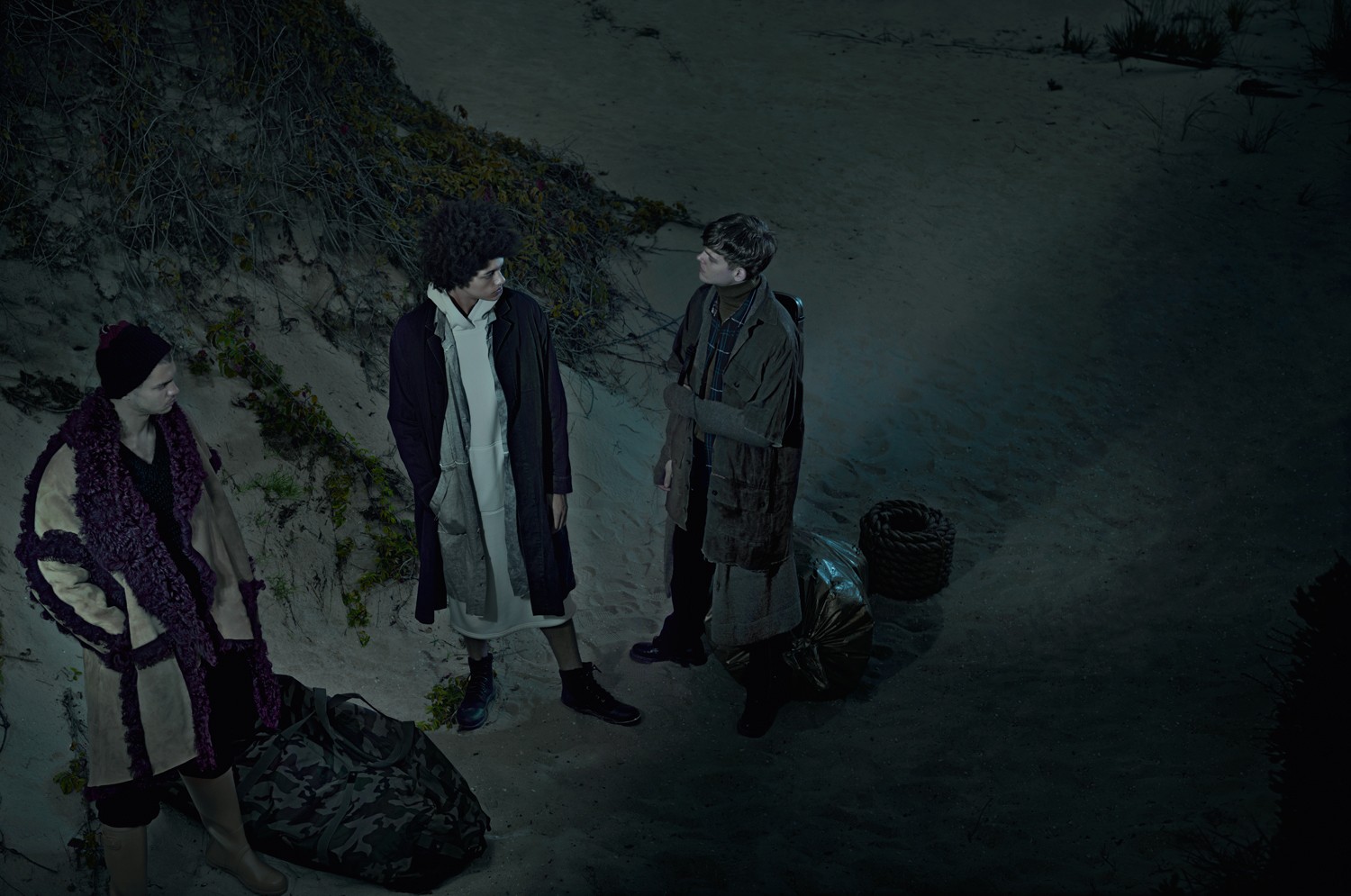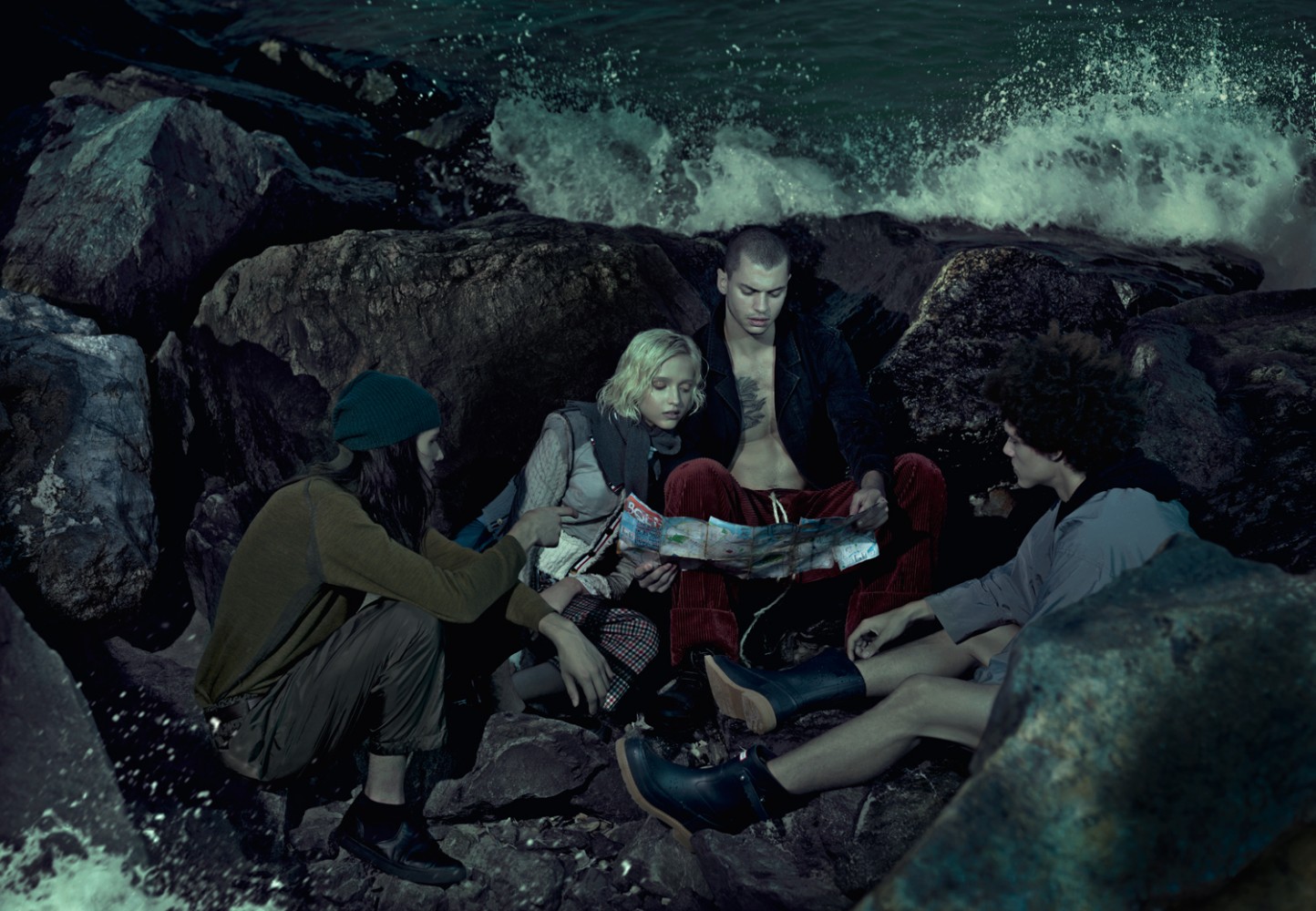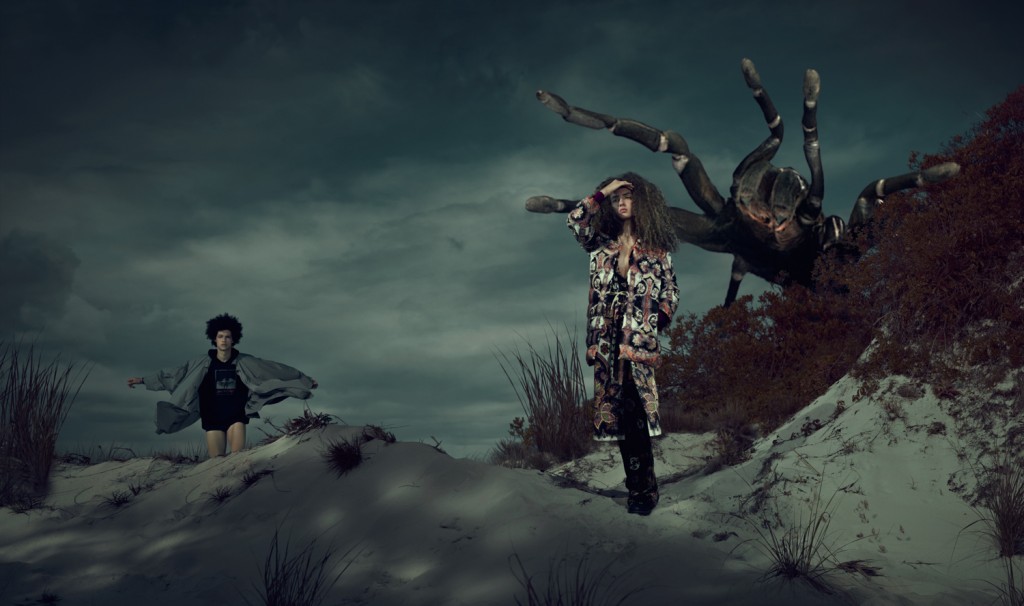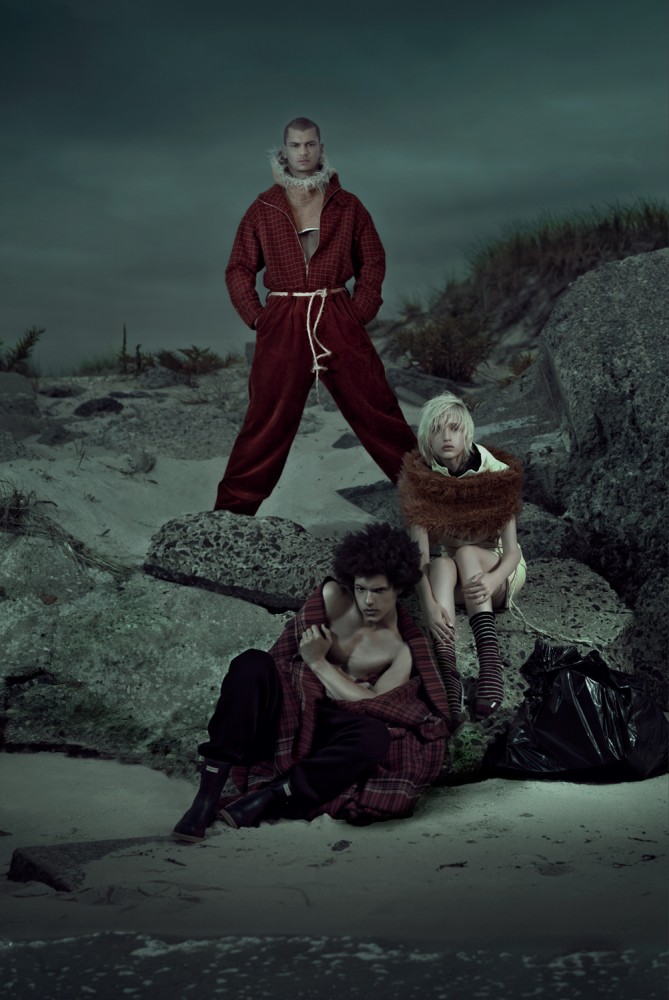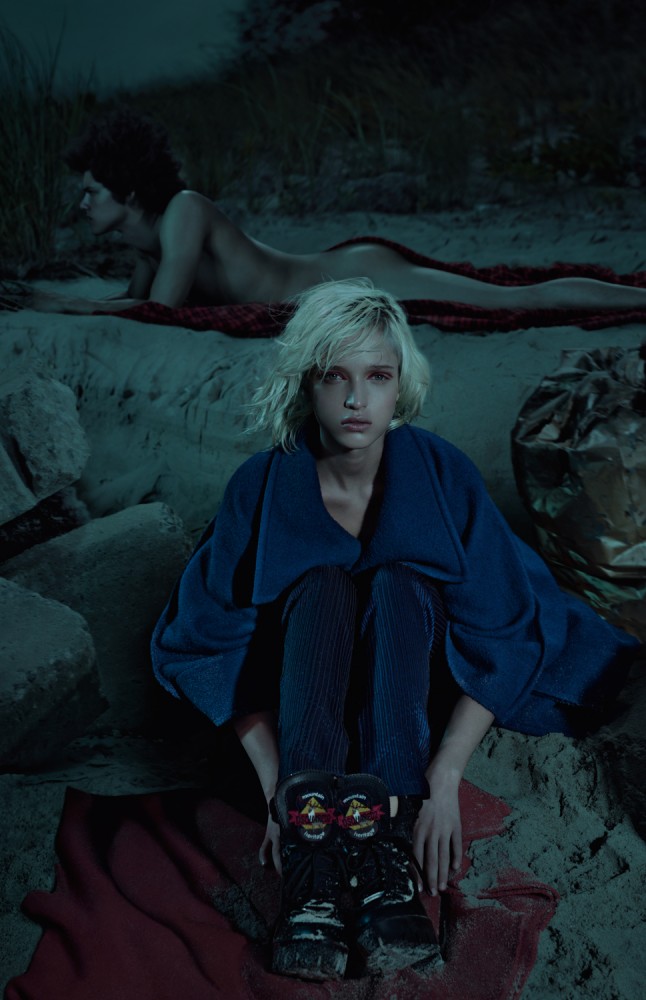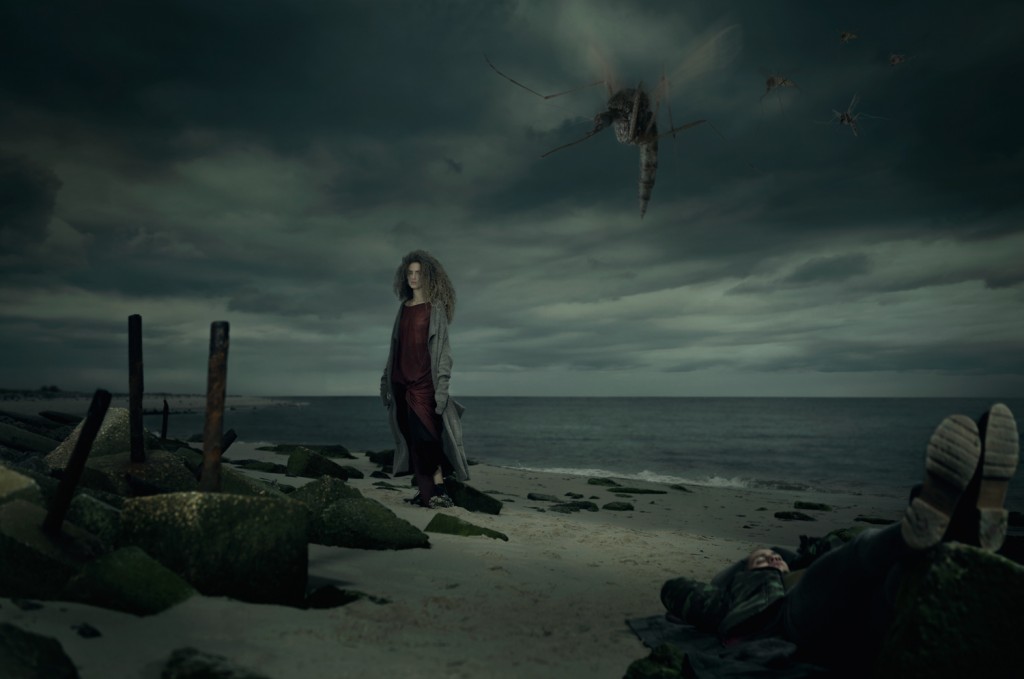In ‘Gods & Monsters’, Joseph Chen tells a post-apocalyptic tale where survivors and over-large, mutated creatures come together on a remote island, merging into a sci-fi creation with a distinct signature and visionary message.
How did you get into fashion photography?
I think I‘ve always been a storyteller since my early childhood, and a love for and fascination with beautiful women was invariably there from the moment I could differentiate between faces. A few years ago I was exposed to this alrgem fine-art photography exhibition about whales, elephants and monks, and it moved me: it was the turning point that made me take the leap to becoming serious about photography. To educate myself, I attended some classes; at the time I wanted to do fine-art photography. After a while I thought I wanted to do glamour and nude photography instead. I ventured into that too, but found it difficult to tell a story with models just in bikinis or lingerie. Eventually my work evolved into fashion photography as it satisfies both my passion for storytelling and beauty.
You’re originally from Asia, got your Master’s in Photography in Madrid, and currently live in New York. To what degree has your photography been influenced by these three cultural threads — or is it influenced by something else?
The truth is, I did not finish my Master's in Spain; I was delayed in paying my tuition and the school decided to kick me out. However, to answer your question, I think my love for blonds is certainly attributed to my Asian roots; after all, we don't have blonds there. I do believe the art and edgy component of my work is attributed to both Spain and New York. I would have been a different photographer if I‘d stayed Asia.
You have a very distinctive style that is not necessarily considered commercial. Is that an advantage or disadvantage in your field?
It is interesting that you say that. I was at a meeting last year with a newbie agent from one of the biggest agency in New York. He thought my lighting was very commercial; he wanted me to shoot more like how the trend is right now, photograph it with even lighting across the image. I never really understood why he thought chiaroscuro is in any way commercial. However, I‘ve also lost jobs because clients think my work is too dark and edgy. Hence, a while back I decided to just do what I feel like; though, of course, in life everyone compromises from time to time, and I would too, but only to a certain degree. I do believe that clients should hire photographers because of their style and point of view, and nothing else: not because they are cheaper, have photographed this celebrity or that big model, have a nicer studio. If these are their reasons for commissioning a specific photographer it will be chaos.
What is ‘Gods & Monsters’ about?
This story evolved from a simple vagabond to post-apocalyptic premise, with the last few survivors of mankind after a nuclear war and with animals that have mutated into these giant creatures as a direct result of radiation exposure. We took our inspiration from 1950s and 60s Japanese science fiction movies that were mostly produced a decade or two after Hiroshima and Nagasaki. Currently, we find ourselves in the midst of political uncertainty with the rise of megalomaniac leaders around the world, and the possibility of this scenario is more real than ever.
You work with composing, where you include oversized marine animals. To what degree does post-production play a role in your work?
Post production played a big part in making these images look the way they do. It was a team effort: I was working with Andrew Basile, the creative director I work with, and Alex Wink, my retoucher for about 3 to 4 months working on the post-production of this project.
How important was it for you to be able to work without specifications that limited you?
It depends on the specifications: there will always be specifications, but, as I mentioned before, the clients who hired me because of my style and not for any other reason were the most satisfied with the end result.
You photographed with the Leica S, filmed with the SL, and then also used a classic from the sixties. Why such a mixture?
I used Leica S because I thought it was the best camera for print. For the video, instead of just using the SL, we decided to shoot some parts with a vintage, analogue camera, to give it the sense that those moments are memories. After all, memories are never in high definition.
